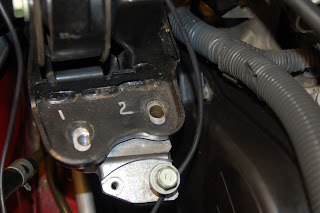Just got a 2004 Sienna XLE limited with 60k. The wife noticed one headlight would turn on and then flicker and go out. So I was thinking 10 bucks and 5 minutes and I would have a fixed light bulb. Think again. Turns out my new fancy Sienna has a special light called HID (High Intensity Discharge) Xenon. Up until now, I did not know I had the option of seeing twice as far with Xenon. Also up to now, I am not sure that I cared to see that far.
Bulbs costs 100.00 from Autozone and must be ordered. So I found some on ebay 20.00 with free shipping and replace both of them as advised.
http://stores.ebay.com/HID-Xenon-World
So I tried them out. Light comes on, light flickers then goes out, same problem. I search the internet a little more and found out I could have a bad ballast or a bad connection. I cannot see any connections, because the connections are buried under the housing assembly. So how much is a ballast? Or as Toyota calls them computer lighting control. From the dealer expect to pay $600.00 - $900.00. That's right, almost what I paid for my last two cars. All that, just to help me see 2X farther than I am probably capable in the daylight.
Back to e-bay. I ended up buying a used ballast about $40.00. The OEM is made by DENZO. The original was DLT002 but I read somewhere that you could use part# 'KDLT002'. On the part it is printed that it is only supposed to last 2000 hours. Hopefully not too many of those hours have been used.
I got the part and then checked out my repair manual. To get to the ballast out, you must remove the front bumper. That's right the front bumper cover must be removed to get to the screws that hold on the light assembly. The ballast is located on the bottom of this assembly.
To remove the bumper cover you must remove the 4 black plastic plugs at the top of the bumper. These have a solid black head that is pushed into a black nut. These can be removed by prying up on the head with a screw driver. Pull the head up about 1/4 of an inch and then pry the lower part out. It should come out very easily.
Next unscrew the 6 screws the bottom side of the bumper next to the splash screen. On the far side of this bumper are square light colored plastic inserts that both capture the splash shield and provide a place for a screw. These need to be squeezed from the back if possible, after the screws are removed. They should snap back through.
Also the fender well splash shields have 3 types of fasteners that must be removed. The fasteners toward the rear are black and square and have a screw in the middle. Remove the screw. The square must be pried out a little bit and squeezed from the back if possible. They have snap fits on the corner of the square shaped insert. I broke a couple of these.
There are a couple snap fit fasteners with the solid head black in color as described previously. These are located at the top of the wheel well. Toward the front of the wheel well is a fastener with a slotted head. The head seems to pry straight out.
Lastly there are a couple fasteners toward the back of the wheel well that simply unscrew.
Now the fun begins. A bolt between the front bumper cover and the fender must be accessed from the inside. I had to find a 10mm boxed end wrench that was slightly offset before it would move. Once this bolt is removed, release two square black snap fits with a small screwdriver to release the bumper from the fender. These are located midway between the center bolt and the edge. Use a small flat head head screw driver to depress the snap fit on both square snap fits.


Now the front bumper dropped far enough away to get to all the bolts on the headlight assembly. Remove all of the mounting bolts and the headlight wires.
After removing the assembly, I found out that ballast had been badly corroded. Probably, water was pooling the ballast area.

The new part fit nicely in the same location. I cleaned out the corrosion from the housing and seal.

Install all the wires to the light assembly before installing the fixture.

In the end after buttoning everything up, the light did work fine.
If anyone figures out a way to switch back to the non-HID version please comment below. Hopefully this helps someone else avoid some headaches. Also, feel free to add to advice that might help.
2014 Update: After several years the light on the other side is no longer working. The side I replaced is still working.
Also it appears that in order to change back to Halogen lights I would need to buy a new light fixture. This is still very tempting, as I have been less than impressed with the HID light fad and expensive Ballasts.















